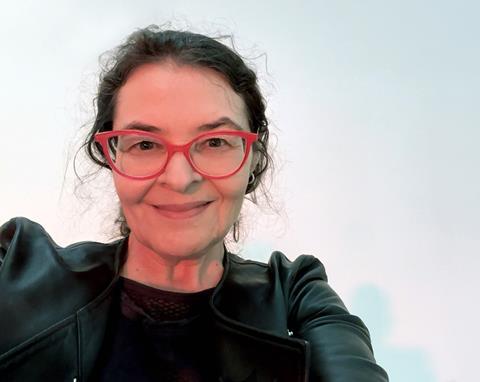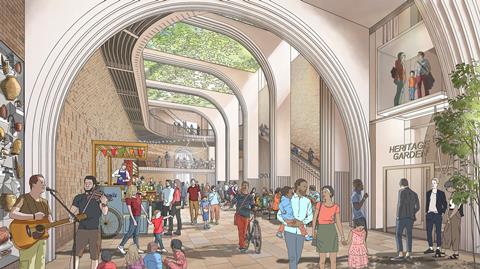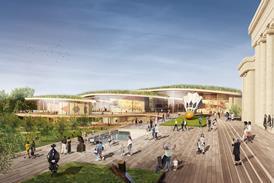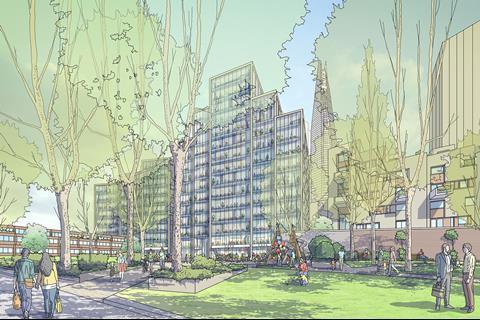In this personal reflection, architectural illustrator Adriette Myburgh revisits the lessons of hand-drawn perspective and the mentors who shaped her approach to architectural visualisation

My journey into architectural presentation began with a lie, a decision made in the heat of the moment that would shape my career.
Fresh from graduation and eager to work at a prestigious design firm, I found myself in an interview where the stakes felt high. “Do you know how to set up a perspective view?” the interviewer asked, and I hesitated, acutely aware that admitting ignorance could cost me the opportunity. “Yes,” I replied, though in truth I had never learned how to do it.
After the interview, I rushed to the nearest bookstore, picked up a beginner’s guide to perspective drawing and immersed myself in its diagrams, principles and techniques, desperate to learn as much as I could.
A week later, standing before a large green drawing board at my new workplace, I faced my first task: setting up and drawing a perspective view entirely by hand.
The process was intricate and demanding. I precisely aligned a scaled floor plan with the chosen viewpoint, extending a vision line outward at a perfect 90-degree angle to meet the horizon. Vanishing points were carefully plotted, and from there, the 3D view was projected onto an imaginary picture plane, gradually building the depth and spatial clarity essential for the drawing.
Today, such tasks are simplified by software, where creating a 3D view is as easy as positioning a camera and dragging it across a model.
This begs the question: is understanding traditional perspective techniques still relevant in today’s world of computer renderings and AI? Do vanishing points and horizon lines, which once demanded such precision, still hold value in a digital world?

I spent the next two years returning to that same drawing board, perfecting the craft. I even pinned a thumbtack into the board to mark each viewpoint for my perspectives, tying a string to it and pulling it toward the vanishing points, like rowing a boat across plywood.
When I eventually handed in my resignation, my director said, “But I bought you a computer!” A missed opportunity, perhaps, but I had already made my decision.
In my next role, I was given space to explore and develop my skills. I used this time to delve deeply into the computer placed in front of me, mastering new software. Yet, a year later, I was made redundant. The explanation? “Different strokes for different folks.” It was an unceremonious exit, but it wasn’t the end of my journey.
A last-minute job offer in Dublin unexpectedly shifted the course of my career. It was there that I met John Curran, a mentor whose quiet encouragement came at just the right time.
He had an intuitive way of offering guidance, helping me navigate the more subtle challenges of the profession. His support was never overt, but it was steady and invaluable, providing the reassurance I needed to navigate an industry that often demanded resilience and adaptability beyond mere technical skill.
One day, John casually said, “You’ll love Photoshop.” I immediately spun around in my chair, full of youthful stubbornness, eager to defend the software I preferred.
His final words to me were simple yet profound: “I just wanted to give people some light.” Three months later, John lost his battle with cancer, and I was heartbroken.
How do we ensure that our visions, not just our skills, are valued in a profession constantly wrestling with its own complexities?
The office put together a box of his personal items, inviting us to take something in his memory. It took me weeks to summon the courage, but when I finally looked through it, I chose two things that held special meaning: his treasured Blundell Harling set square and a copy of Photoshop, symbols of both his generosity and his passion for light and vision.
When I was invited to write a commentary on architectural perspective for BD, I found myself reflecting on a diagram from the foundational book on perspective drawing that had shaped my career. It illustrated an observer holding an imaginary picture plane, positioned deliberately to reveal the horizon.
I searched the British Library’s online catalogue, hoping to rediscover that pivotal image. Instead, I stumbled across something unexpectedly relevant: A Familiar Treatise on Perspective, Designed for Ladies by William Daniel, published in 1807.
The description noted that the book was epistolary in form, composed as a series of letters. Each of the nine letters was written by William Daniel to the mother of a young woman named Eliza, offering guidance on perspective drawing, ostensibly for Eliza’s education.
One passage stood out to me: “Indeed, we all of us experience, in our progress from ignorance to knowledge, that at first we must adhere to our rules; but that, as we further advance, we form for ourselves more expeditious modes of obtaining the objects we are seeking; though we are only enabled to do so by a previous acquaintance with the stricter rules.”
He draws a parallel with arithmetic, suggesting that two-thirds of every lengthy calculation is often the result of what we have learned from our teachers.
If creating a 3D view today is as simple as positioning a camera and dragging it in the direction you wish to see, does it still matter to understand the significance of a vanishing point or how a horizon line in digital space relates to an eye level above the ground?
A thought-provoking question can often hold more value than a myriad of answers.
As I reflect on that initial interview when I was asked if I could draw a perspective, I now recognise that my ability to immerse myself in architectural perspectives has become my superpower. No matter how complex the commission or how little information is provided, I approach each empty site with a steadfast resolve, translating that foundational knowledge into the sketches that bring ideas to life.
As I conclude, I’m reminded of William Daniel’s words to Eliza’s mother in A Familiar Treatise on Perspective, Designed for Ladies, which still resonate with me: “But I must now close my lesson: and wishing you health and happiness, beg you to believe me.”
In this ever-evolving field, where perspectives shift and boundaries are tested, I find myself pondering: How do we ensure that our visions, not just our skills, are valued in a profession constantly wrestling with its own complexities? What does it truly mean to carve a path in architecture that allows us to navigate these challenges?
And as we seek to elevate our understanding beyond the foundational rules, how can we invite others to join us on this journey of perspective, illuminating the way for those who will follow? The answers remain tantalisingly out of reach, waiting to be discovered by those bold enough to ask the right questions.
Postscript
Adriette Myburgh is director of Architecture In Perspective Ltd.
Instagram: @adriette_artarchitecture.




















1 Readers' comment